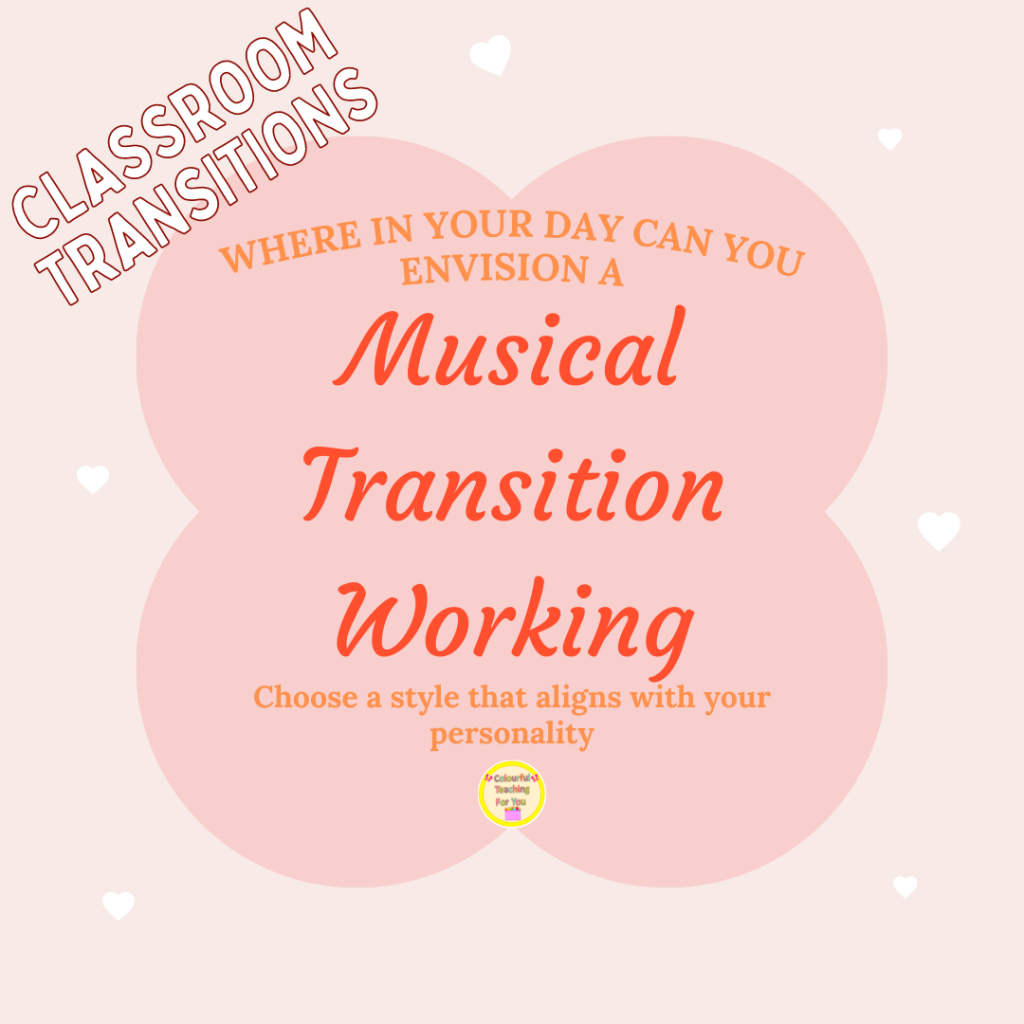Today we’re going to talk about three easy and musical ways to transition between classroom activities.
Transitions aren’t easy for children of any age, especially if they’re super focused on what they’re working on. It’s especially difficult for young children.
If you’re looking for a fun way to welcome students or to create a flow between activities, integrating musical transitions is the way to go.
This helps avoid unnecessary chatter and maintains their focus as students are engaged in the music. It also provides a student with a sense of community as they’re all participating in this exciting activity.
For teachers, instead of constantly having to repeat instructions for it to only go in one ear and out the other, integrate music as an instructional tool. It’ll save your voice and sanity.
Actionable Steps:
#1. Enjoy the Chant
Use chats like the ones outlined in 3 Great Attention Getters for Teachers in Elementary, when you need your students to focus on you or a task.
When students repeat or call out chants, it switches their focus to a new task so that they aren’t as distracted. This reduces the time between what they’re currently doing and what needs to be completed.
You don’t just need to use the call-and-response method. Vary it up and integrate poetry or anything else that your students may be interested in.
#2. Sing It Out
Have children sing as they do specific tasks. For example, “The Cleanup Song” on the children’s show, Barney outlines the steps a child needs to do to clean their space and it provides a clear purpose for what they’re doing.
Songs like this are catchy, so once you’ve sang it with them a few times, you’ll have students singing it without you prompting them in no time.
This is a great way to motivate them to do simple tasks and to create a routine around it.
#3. Break It Down
If your students have been sitting for too long or have been working quietly, have them stand up and dance their way into the next task. It helps gets their wiggles out so that they can focus. For this kind of a transition, I use fast and upbeat songs, like the theme song to “Hawaii Five-O” or “Mission Impossible.”
When you want your students to settle down and focus on quiet or independent work, play classical instrumental music, such as music from Beethoven or Mozart. Play It softly so as not to overstimulate your students. Refrain from playing instrumental pop music as your children will naturally want to sing along with it if they know the lyrics, which defeats the point of this type of exercise.
Recap:
Let’s recap really quickly. Today, we looked at the following:
- The reasons why using music for students helps keep students on task.
- We looked at three types of musical transitions: enjoy the chant, sing it out, and break it down.
- How to implement each of the strategies.
Free Resources:
In the mean time, if planning so that you’re ahead is not your jam, then check out the following: FREE MASTERCLASS: Systematic Plan to Super Passionate.
Next Steps:
I’d love to hear from you. In the comments below, please answer the following:
If you found this video beneficial, would you do me a favor? Share this with your family, your friends, your loved ones, your co-workers or someone who you think could benefit from this. Thank you!
I’ll see you next Friday at 5:30pm PST.
Until I see you next time, remember to create, experience & teach from the heart.
Take care,
Charlotte





